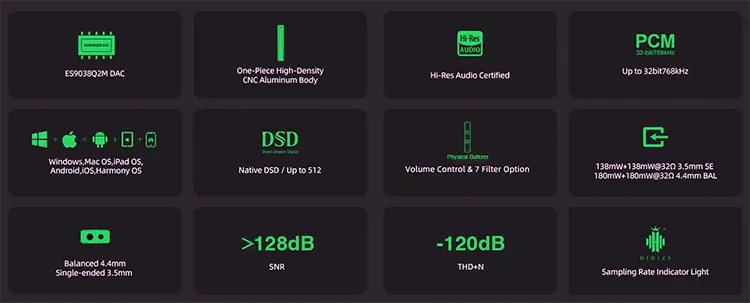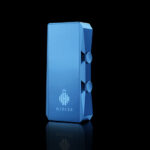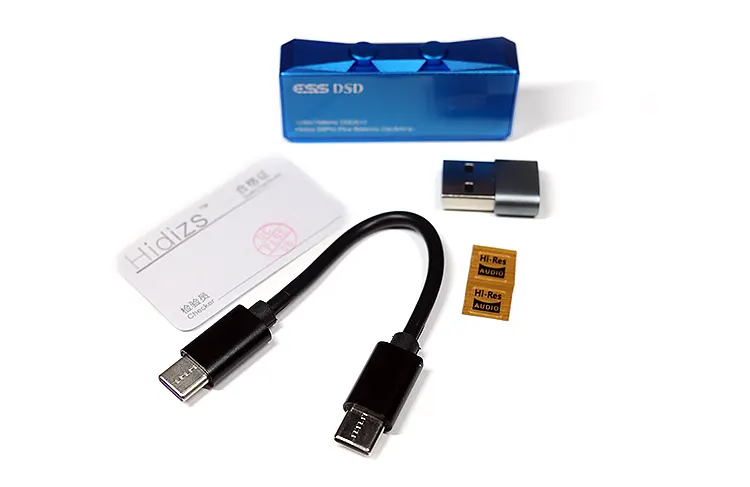We review the Hidizs S9 Pro Plus Martha, which is a portable dongle DAC featuring up to DSD512 decoding and 180mW of balanced output power. It is priced at $139 with a pre-order promotion of just $79.99.
Disclaimer: This sample was sent to us in exchange for our honest opinion. Headfonics is an independent website with no affiliate links or status. We thank Hidizs for their support.
To read more about Hidizs products we have previously assessed on Headfonics click here.
Please note, that this article follows our current scoring guidelines which you can read in more detail here.
Going back to our original Hidizs S9 Pro dongle DAC review, we commented that to many consumers, the price to performance point was equally as important as the audio qualities for such an item.
Hidizs could be considered a leader in this department, so the new S9 Pro Plus Martha portable dongle DAC may just continue that tradition.
The S9 Pro Plus Martha updates some of its previous technology, along with some nice new filter choices from the integrated DAC chipset.
Hidizs code-named the unit, “Martha” after the last Passenger Pigeon (Ectopistes migratorius) as a reminder of our tie to the planet and the species that cohabitate (or did in this case) on Earth.

Tech Highlights
The Hidizs S9 Pro Plus Martha uses a fourth-generation processing circuit architecture developed by Hidizs. This is a fully balanced circuit architecture consisting of a USB interface processor, DAC, independent headphone amplifier, and POP sound cancellation system.
This DAC chip is an ES9038Q2M and supports a maximum 32bit/768kHz PCM sampling rate, with an SNR of up to 128dB and a THD+N of -120 dB.
Power reaches a peak of 138mW @32Ω for the 3.5mm single-ended, and 180mW @32Ω for the 4.4mm balanced.
This is slightly higher than the S9 Pro in 3.5mm SE (100mW @32Ω) but lower for balanced (2.5mm BAL, 200mW @32Ω). Both also use the same chipset, with a new jitter clock in the S9 Pro Plus Martha separating the two.
Filter Choices
The S9 Pro Plus Martha has six digital filters that can be toggled through by simultaneously pressing both side buttons, and the color changes to denote the appropriate filter.
Allowing the user to toggle through the choices makes the S9 Pro Plus Martha a bit more versatile for different headphones and IEMs. The light will blink in the following colors representative of the chosen filter by pushing both side buttons simultaneously.
- Anodizing fast roll-off (Default Filter, green light): Slightly forward vocals, extended high frequencies with reduced resonance.
- Linear phase fast roll-off (red light): Enhanced analytical capabilities, delivering a clean and crisp sound.
- Linear phase slow roll-off (blue light): Enriched harmonics, full low frequencies, and natural reverb.
- Minimum phase fast roll-off (yellow light): Balanced and moderate sound.
- Minimum phase slow roll-off (purple light): Clean sound with a forward position.
- Hybrid fast roll-off (white light): Soft and smooth sound with enhanced detail.
Design
Small size is an advantage to a dongle/DAC and the S9 Pro Plus Martha accommodates with svelte dimensions of 55mm×25mm×11mm, massing out at only 17g (11g for the S9 Pro).
Coming in anodized blue, silver or black the rectangular unit has beveled edges on the long skinny sides, with the two actuation buttons highlighting one of those sides.
Inlaid plastic covers the largest two faces, which have the nomenclature on the back, and the Hidizs logo (and “HIDIZS”) on the other, which both light up to show the decoding format according to color.
I/O
A USB-C connection resides on the bottom of the S9 Pro Plus Martha, with the dual 3.5mm SE and 4.4mm BAL jacks on the other end. The two actuation buttons lie on the side and resemble a knob, which would be used to raise or lower the volume.
Interestingly, they do not rotate, only depress to change songs by FF or REV. Pressing both simultaneously will change the filters (again by color, listed above).
USB-DAC
The S9 Pro Plus has a USB-C to USB-C connection, so those with an iPhone will need the camera adapter or something of the sort.
I ended up using a longer USB-C to USB-C due to my current logistics when plugged into my MacBook Pro. The longer cable was not needed for my iPhone.
Connection and recognition were straightforward on both devices. I did run into an issue of my MBP not recognizing filter differences (to my ears), but this was easily corrected by unplugging and replugging the Plus. This did not occur after a firmware update, either.
Battery Life
The S9 Pro Plus Martha does not have a built-in battery and therefore requires the use of your source to power. I noticed battery drain on my iPhone was noticeable, at roughly 10-15% an hour, a bit too high for my liking. Less bothersome on my MBP, but still noticeable at 2-3%/hour.
The drain is not out of the existing realm, but worth a look, regardless. The 3.5mm SE used less battery than the 4.4mm BAL, as one might expect.
Packaging & Accessories
The Hidizs S9 Pro Plus comes in a small, square plastic package, with the typical black sleeve over the box. That sleeve carries the necessary information on the back as well as a picture of the black version on the front. The lid of the box carries the Hidizs logo and name, with their motto, “Relish Music. Beauty In The Details!”
Lifting the lid, you are met with the S9 Pro Plus Martha in the color you chose. Mine is the anodized blue and looks quite sharp. Accessories include a short USB-C to USB-C cable, a USB-C to USB-A adapter, and the manual.
I do like the small packaging and the reusable box aspect for keeping it all together.
Sound Impressions
The listening sources were my MacBook Pro and iPhone 13 Pro Max exclusively. I used the IEM Spirit Torino Twin Pulse and Audeze LCD3 as my listening choices along with the FiiO FT3 (32 ohm) and the Campfire Audio Solaris 2020.
Summary
Grading differences in small, affordable dongle/DACs is an exercise in patience when switching between the filter options. The sound differences can be small on one device (my iPhone), but markedly more so on others (MBP).
This should be taken separately from the sound impressions, but still mentioned. I did hear differences in both sources, but the changes were minimal on the iPhone according to my ears across all listening devices.
The underlying signature was vibrant but lacking in micro-details. I enjoyed the energy, especially when changing filter choices, and having that ability allows the user to tailor the sound to their needs, or headphones.
Timbre
Utilizing the “neutral” filter first (green color when switching), the sound provided a vibrant signature, with good authority to the low end, while staying controlled. With a front-forward signature, the S9 Pro Plus Martha could be considered to have a small W-signature but tends towards more neutral.
The details tend to fall off as a result of not straying too far from neutral, but I never found it lacking in energy. Since it is more neutral, there is less coloration to the sound, but that is where each of the six filters can change what we hear.
I did have an overall preferred filter, but each presents a nice change to the song or when using different headphones or IEMs.
Staging & Dynamics
The S9 Pro Plus Martha does not lack note weight, with decent resolution present in all filter choices. None of the choices come across as thin, nor too meaty, but do lack a bit of clarity compared to something such as the more expensive Questyle M12.
The dynamics of female vocal presentations do sound quite good, with very good articulation, which can scale well between listening sources.
With the ability to change filters to suit your musical genres or listening device, the S9 Pro Plus Martha promotes a leg up on many of its competitors.
Preferred Filter
My preferred choice was the blue filter (#3 from the earlier filter list) since I prefer a more liquid, mellow sound presentation. Lengthening the notes allowed them to linger just a bit, thickening the sound without losing too much detail.
There was also a slight reverb, enhancing a slight holography to the music. Something I enjoyed with jazz presentations.
Having the six choices not only helps with different headphones and IEMs but also allows the user to tailor the signature for multiple genres.
Click on page 2 below for our recommended pairings and selected comparisons.






